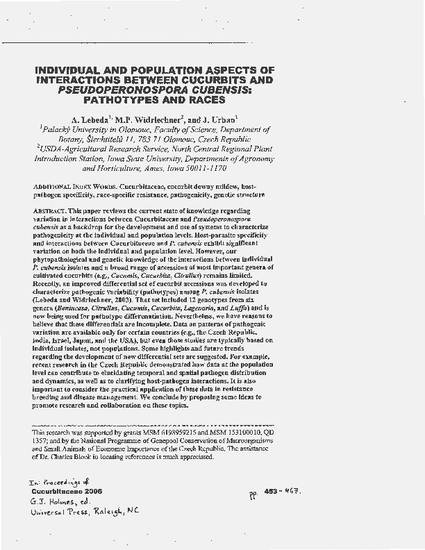
This paper reviews the current state of knowledge regarding variation in interactions between Cucurbitaceae and Pseudoperonospora cubensis as a backdrop for the development and use of systems to characterize pathogenicity at the individual and population levels. Host-parasite specificity and interactions between Cucurbitaceae and P. cubensis exhibit significant variation on both the individual and population level. However, our phytopathological and genetic knowledge of the interactions between individual P. cubensis isolates and a broad range of accessions of most important genera of cultivated cucurbits (e.g., Cucumis, Cucurbita, Citrullus) remains limited. Recently, an improved differential set of cucurbit accessions was developed to characterize pathogenic variability (pathotypes) among P. cubensis isolates (Lebeda and Widrlechner, 2003). That set included 12 genotypes from six genera (Benincasa, Citrullus, Cucumis, Cucurbita, Lagenaria, and Luffa) and is now being used for pathotype differenatiation. Nevertheless, we have reasons to believe that these differentials are incomplete. Data on patterns of pathogenic variation are available only for certain countries (e.g., the Czech Republic, India, Israel, Japan, and the USA), but even those studies are typically based on individual isolates, not populations. Some highlights and future trends regarding the development of new differential sets are suggested. For example, recent research in the Czech Republic demonstrated how data at the population level can contribute to elucidating temporal and spatial pathogen distribution and dynamics, as well as to clarifying host-pathogen interactions. It is also important to consider the practical application of these data in resistance breeding and disease management. We conclude by proposing some ideas to promote research and collaboration on these topics.
Available at: http://works.bepress.com/mark_widrlechner/121/

This is a proceeding from Cucurbitaceae 2006 (2006): 453.